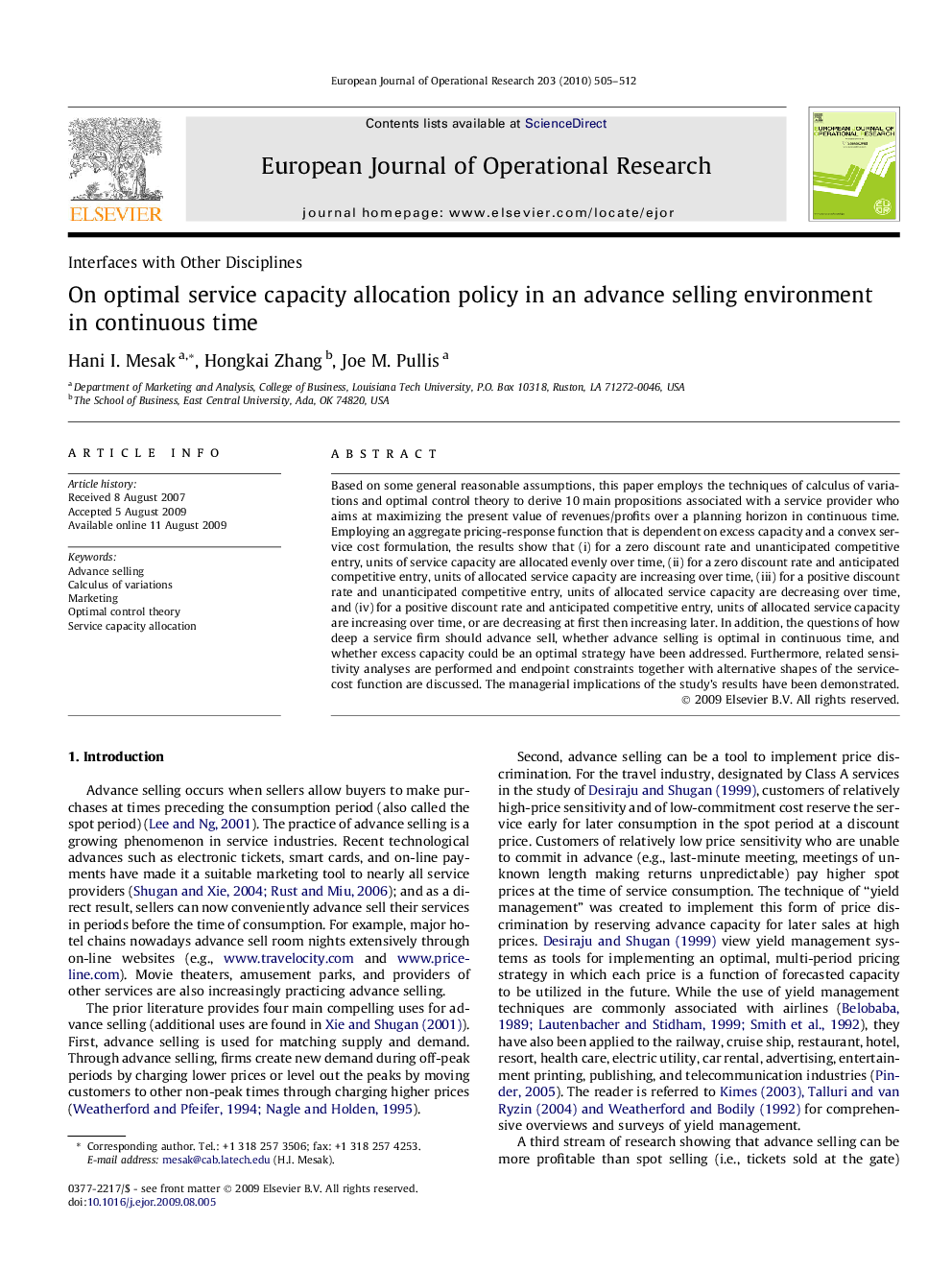| Article ID | Journal | Published Year | Pages | File Type |
|---|---|---|---|---|
| 480598 | European Journal of Operational Research | 2010 | 8 Pages |
Based on some general reasonable assumptions, this paper employs the techniques of calculus of variations and optimal control theory to derive 10 main propositions associated with a service provider who aims at maximizing the present value of revenues/profits over a planning horizon in continuous time. Employing an aggregate pricing-response function that is dependent on excess capacity and a convex service cost formulation, the results show that (i) for a zero discount rate and unanticipated competitive entry, units of service capacity are allocated evenly over time, (ii) for a zero discount rate and anticipated competitive entry, units of allocated service capacity are increasing over time, (iii) for a positive discount rate and unanticipated competitive entry, units of allocated service capacity are decreasing over time, and (iv) for a positive discount rate and anticipated competitive entry, units of allocated service capacity are increasing over time, or are decreasing at first then increasing later. In addition, the questions of how deep a service firm should advance sell, whether advance selling is optimal in continuous time, and whether excess capacity could be an optimal strategy have been addressed. Furthermore, related sensitivity analyses are performed and endpoint constraints together with alternative shapes of the service-cost function are discussed. The managerial implications of the study’s results have been demonstrated.
